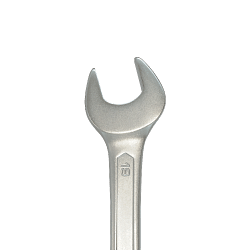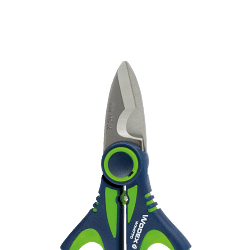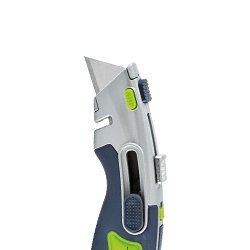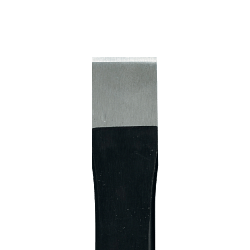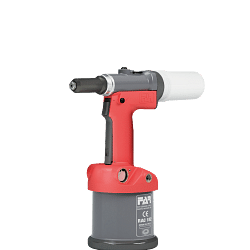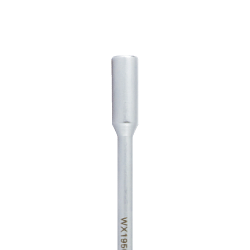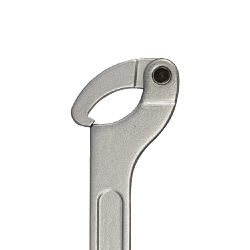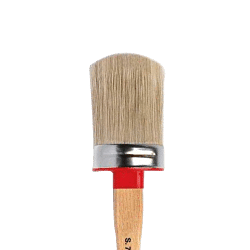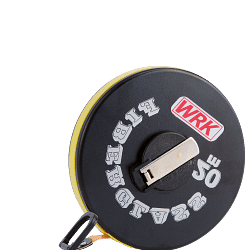Register and use the discount code NEWWELCOME to get 10% off on your first purchase. GET DISCOUNT.
Register and use the discount code NEWWELCOME to get 10% off on your first purchase. GET DISCOUNT.
Register and use the discount code NEWWELCOME to get 10% off on your first purchase. GET DISCOUNT.
Free shipping in 24h from 200€
Catalogues
Customer service
How can we help you?
- Faq
- Customer service
02.927371
- Supporting big orders
02.38298620
-
info@linkindustrialtools.it
- Request assistance with form
Or contact us with the chat in the lower right corner
- All products
 Integral cutting tools
Integral cutting tools Turning tools
Turning tools Thread tools
Thread tools Thread tools
Thread tools- All products
- Thread inserts
 Milling cutters
Milling cutters Drilling tools
Drilling tools Drilling tools
Drilling tools- All products
- Indexable drill bits
- Indexable drill heads
 Clamping systems
Clamping systems Measuring and precision tools
Measuring and precision tools Measuring and precision tools
Measuring and precision tools- All products
- Digital calipers with readings to 0.01
- Analogue calipers
- Digital micrometers
- Analogue micrometers
- Bore gauges
- Snap gauges
- Digital gauges
- Analogue gauges
- Touch probes
- Zero setters and edge finders
- Inspection plates
- Altimeters
- Height gauges
- Squares and levels
- Threaded rings
- Gauge blocks
- Calibrated tapes and thickness gauges
- Digital and analogue hardness testers
- Roughness testers
- Microscopes, lenses and visors
- Digital thermo-hygrometer to measure moisture
- Reset benches
- Optical profile projector
- Professional, digital dynamometers
- Laboratory scales
- Digital amperometric pliers
- Thickness and adhesion gauges
 Hand tools
Hand tools Hand tools
Hand tools- All products
- Combination wrenches
- Spanners
- Hook wrenches
- Tubular wrenches
- Hexagon keys
- Torx wrench
- Socket wrenches
- Screwdrivers
- Torque wrenches
- Torque screwdriver
- Inserts and bits for screw drivers
- Tool trolleys
- Workshop pliers
- Wire strippers
- Cable strippers
- Cutting nippers
- Professional scissors
- Nippers
- Professional shears
- American or Swedish pipe wrench
- Adjustable wrench
- Pipe tools
- Pipe cutter for plumber
- Cutter
- Hacksaws
- Deburring tools
- Chisels
- Hammers and mallets
- Mechanical and conical pullers
- Clamps
- Tap wrenches and die stocks
- Riveters
- Flexometers
- Tape measures
- Markers
- Flat squares and rulers
- Professional dividers
- Professional protractors
- Brushes
- Lubricators and spray nozzles
- T-wrenches
- Reversible ratchets
 Abrasives
Abrasives Abrasives
Abrasives- All products
- Cutting discs
- Deburring grinding wheel
- Flap discs
- Fabric discs for surface treatment
- Abrasive fibre discs with Velcro
- Abrasive cloth in rolls, sheets and bands
- Flap wheels with pin and abrasive wheel with hole
- Abrasive wheels for buffing machines
- Abrasive spiral bands
- Abrasive brushes
- Flexible sanders
- Mounted grinding discs
- Polishing felt
- Solid carbide rotary cutters
- HSS rotary cutters
- Abrasive wheels for sharpening and grinding
- Diamond grinding wheels
- Grinding stone
- Diamond paste
- Abrasive stones
- Files and rasps
- Diamond files
- Grinders and polishing equipment
 Lubricants for machine tools
Lubricants for machine tools Lubricants for machine tools
Lubricants for machine tools- All products
- Water-miscible coolants
- Neat cutting oil
- Minimal lubrication systems
- Oil for guides and slides
- Drums of hydraulic oil fluid
- Anti-freeze for machine tools
- Air coolers
- Oil separator
- Powders and absorbents for oil
- Aspirators for oil mist
- Accessories for cooling lubricants
- Metal and mould protectors
- Grease and paste
 Chemical, adhesives and sealants
Chemical, adhesives and sealants Chemical, adhesives and sealants
Chemical, adhesives and sealants- All products
- Acrylic, cyanoacrylate and epoxy adhesives
- Guns and silicon sealant
- Threadlocker
- Sealants and retainers
- Release agents, lubricants and anti-seize
- Zinc spray and polishes
- Lubrication accessories
- Protections for maintenance
- Industrial Cleansing
- Handwash
- Industrial cloths and rags
- Welding machines
- Electrodes
- Clamps, shields and welding masks
- Antispatter
 Safety equipment
Safety equipment Pneumatics
Pneumatics Lifting systems
Lifting systems Workshop equipment
Workshop equipment Workshop equipment
Workshop equipment- All products
- Column and bench drills
- Accessories for lathes
- Band saws
- Cut-off machines
- Bench grinders
- Power tools
- Spare parts and accessories for Power Tools
- Saws and hole cutters: wood, metal and plasterboard
- Tapered cutters for sheet metal
- Industrial aspirators
- Fume aspirators
- Bench vices
- Technical lamps
- LED torches
- Industrial cable winders
- Trolley wheels
- Quick clamps
- Threaded inserts
- Control knobs
- Packaging accessories and material
- Belt sanders
- Electric tapping machines
 Furnishings and storage
Furnishings and storage Furnishings and storage
Furnishings and storage- All products
- Work benches
- Swivel chairs for office use
- Drawer units for workshops
- Industrial cabinets for warehouses and workshops
- Tool cabinets
- Security cabinets
- Changing room cabinets
- Containers for small metal parts
- Scrap holders
- Workshop trolleys
- Spill pallets for drum storage
- Shelves for warehouses and offices
- Cantilever shelving
- Aluminium ladders
- Modular plinths
- Units and cabinets for waste recycling
 Brand
BrandPromotions
 Bestseller
Bestseller- Catalogues
-
Catalogues
Customer service
How can we help you?
- Faq
- Customer service
02.927371
- Supporting big orders
02.38298620
-
info@linkindustrialtools.it
- Request assistance with form
Or contact us with the chat in the lower right corner
< Hand tools
- Home
- Hand tools
- Clamps
Clamps
At the beating heart of machine shops, where precision and reliability are essential, clamps and grippers play a key role. These often underestimated tools are essential to ensure that machined parts remain firmly in place during cutting, welding, assembly and other machining operations. In this in-depth look, we will explore in detail what clamps and grips are, what they are used for, how they are used, the benefits of using them, and answer some of the most frequently asked questions about these indispensable tools.
Understanding clamps and shackles
Clamps and clamps are devices designed to hold an object or set of objects firmly in place. They are used in a wide range of industrial applications, from the assembly of mechanical components and woodworking to the construction and repair of machinery. Their main function is to apply a clamping force that prevents movement of the workpiece during machining operations.
Types of clamps and grippers
There are numerous types of clamps and grippers, each designed for specific applications and materials. Among the most common are:
- Screw clamps: These clamps use a screw to apply clamping force. They are ideal for applications requiring uniform and controlled pressure.
- Lever clamps: They use a lever mechanism to quickly apply clamping force. They are particularly useful in situations where quick and frequent clamping is required.
- Bar clamps: These clamps have a metal bar that allows the distance between the jaws to be adjusted, making them suitable for workpieces of varying sizes.
- Spring clamps: They use the tension of a spring to hold the workpiece in place. They are ideal for light applications and temporary clamping.
- Toggle clamps: These clamps offer high clamping force through a toggle mechanism, making them suitable for applications requiring high pressure.
Use of clamps and toggle clamps in machine shops
In machine shops, clamps and grippers are used in a variety of operations. When machining a workpiece, it is essential that it remains stationary to ensure precision and safety. Screw clamps, for example, are often used to hold workpieces during milling or drilling, while lever clamps can be used for welding operations where quick clamping is required.
Advantages of using clamps and grippers
The use of clamps and grippers offers numerous advantages in mechanical operations. First of all, they ensure the safety of the operator, preventing unwanted movements of the workpiece that could cause accidents. Furthermore, they improve machining precision, as the workpiece remains stationary and stable. This translates into a higher quality of the final product and a reduction in scrap. Finally, the use of these tools can increase operational efficiency, reducing machine downtime and improving overall productivity.
Frequently asked questions about clamps and grippers
1. What is the difference between a clamp and a gripper?
The main difference lies in the clamping mechanism. Clamps generally use a screw to apply force, whereas clamps may use levers, springs or other mechanisms to achieve rapid clamping.
2. How do I choose the right clamp or tightener for my application?
The choice depends on the type of machining, the material of the workpiece and the clamping force required. It is also important to consider the frequency of use and the need for quick adjustments.
3. Do clamps and grippers require maintenance?
Yes, to ensure optimal operation and a long service life, regular maintenance is recommended, which includes cleaning the clamping surfaces and lubricating the moving parts.
4. Can I use clamps and grippers on delicate materials?
Yes, but it is important to choose clamps with coated jaws or use protection to avoid damaging the surface of the material.
5. What are the recent innovations in clamps and grippers?
Recently, clamps and grippers with more ergonomic clamping mechanisms and lighter but stronger materials, such as aluminium alloys, have been developed to improve ease of use and reduce operator fatigue.
Conclusion
Clamps and clamps are essential tools in machine shops, helping to ensure precision, safety and efficiency in machining operations. Understanding the different types and applications of these tools allows you to choose the most suitable device for your needs, improving work quality and optimising production processes. With proper maintenance and use, clamps and shackles can offer reliable and long-lasting performance, becoming indispensable allies for every mechanical professional.
Read More Read LessUnderstanding clamps and shackles
Clamps and clamps are devices designed to hold an object or set of objects firmly in place. They are used in a wide range of industrial applications, from the assembly of mechanical components and woodworking to the construction and repair of machinery. Their main function is to apply a clamping force that prevents movement of the workpiece during machining operations.
Types of clamps and grippers
There are numerous types of clamps and grippers, each designed for specific applications and materials. Among the most common are:
- Screw clamps: These clamps use a screw to apply clamping force. They are ideal for applications requiring uniform and controlled pressure.
- Lever clamps: They use a lever mechanism to quickly apply clamping force. They are particularly useful in situations where quick and frequent clamping is required.
- Bar clamps: These clamps have a metal bar that allows the distance between the jaws to be adjusted, making them suitable for workpieces of varying sizes.
- Spring clamps: They use the tension of a spring to hold the workpiece in place. They are ideal for light applications and temporary clamping.
- Toggle clamps: These clamps offer high clamping force through a toggle mechanism, making them suitable for applications requiring high pressure.
Use of clamps and toggle clamps in machine shops
In machine shops, clamps and grippers are used in a variety of operations. When machining a workpiece, it is essential that it remains stationary to ensure precision and safety. Screw clamps, for example, are often used to hold workpieces during milling or drilling, while lever clamps can be used for welding operations where quick clamping is required.
Advantages of using clamps and grippers
The use of clamps and grippers offers numerous advantages in mechanical operations. First of all, they ensure the safety of the operator, preventing unwanted movements of the workpiece that could cause accidents. Furthermore, they improve machining precision, as the workpiece remains stationary and stable. This translates into a higher quality of the final product and a reduction in scrap. Finally, the use of these tools can increase operational efficiency, reducing machine downtime and improving overall productivity.
Frequently asked questions about clamps and grippers
1. What is the difference between a clamp and a gripper?
The main difference lies in the clamping mechanism. Clamps generally use a screw to apply force, whereas clamps may use levers, springs or other mechanisms to achieve rapid clamping.
2. How do I choose the right clamp or tightener for my application?
The choice depends on the type of machining, the material of the workpiece and the clamping force required. It is also important to consider the frequency of use and the need for quick adjustments.
3. Do clamps and grippers require maintenance?
Yes, to ensure optimal operation and a long service life, regular maintenance is recommended, which includes cleaning the clamping surfaces and lubricating the moving parts.
4. Can I use clamps and grippers on delicate materials?
Yes, but it is important to choose clamps with coated jaws or use protection to avoid damaging the surface of the material.
5. What are the recent innovations in clamps and grippers?
Recently, clamps and grippers with more ergonomic clamping mechanisms and lighter but stronger materials, such as aluminium alloys, have been developed to improve ease of use and reduce operator fatigue.
Conclusion
Clamps and clamps are essential tools in machine shops, helping to ensure precision, safety and efficiency in machining operations. Understanding the different types and applications of these tools allows you to choose the most suitable device for your needs, improving work quality and optimising production processes. With proper maintenance and use, clamps and shackles can offer reliable and long-lasting performance, becoming indispensable allies for every mechanical professional.


